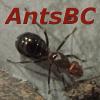1. Location: Park
2. Date of Collection: Wednesday, July 4, 2018
3. Grass area at park
4. Length: 8.5-9mm
5. Features: Blackish-red head, black and red thorax, black gaster, red legs and antennae, one petiole node. Positive it’s a social parasite of the genus Formica
6. Nuptial flight: Not witnessed, found at around 6:30 PM
7. Pictures: https://imgur.com/a/IR1hssD
07/05/18: I've caught 3 more queens all parasitic of this genus in the same location at around the same time and the three I caught differ from one another. The queen of the details described above will be referred to as Queen #1, with the following being Queen #2, Queen #3, and Queen #4.
Queen #2 - 8.5-9mm, blackish-red head, black and red thorax, black gaster, red legs and antennae, one petiole node. I'm assuming this species is the same as Queen #1
Pictures: https://imgur.com/a/lkE3Jvs
Queen #3 - 8.5-9mm, redish-orange head with no black visible, black and red thorax, black gaster, red legs and antennae, one petiole node.
Pictures: https://imgur.com/a/l0n6kBv
Queen #4 - 10mm, redish-orange head with no black visible, black and red thorax, red and black gaster, with the red appearing after the waist and then black, blackish-red legs and antennae, one petiole node.
Pictures: https://imgur.com/a/tdWe4qk
Thank you for all the help in advance!
Lasius niger & Camponotus barbaricus
Edited by LearningAntz, September 9 2018 - 7:14 PM.

















